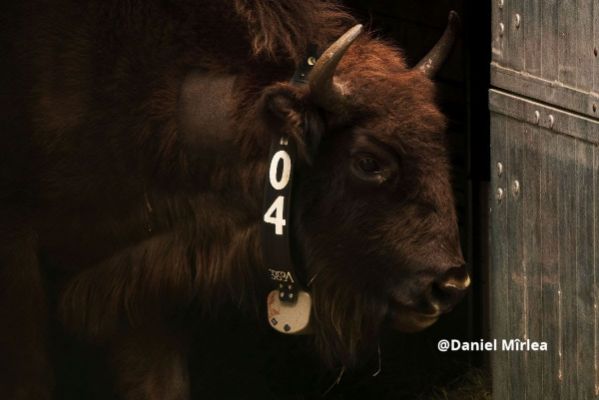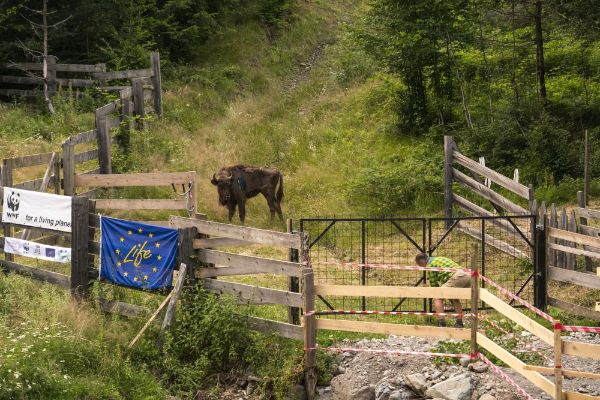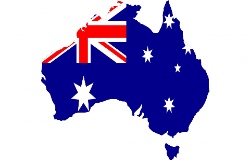Eight New Bison Contribute To The Largest Free-Roaming Population In Romania

Eight new bison, the largest land mammal in Europe, have reached Bison Hillock, in Armeni, Romania where they will soon join the other 57 free-roaming individuals in the Southern Carpathians. Rewilding Europe and WWF-Romania have now successfully raised the number of bison in the wild to the biggest population seen in the country in the past 200 years.
The 6 females and 2 males began their long journey to the wild from 6 reservations in Germany and Switzerland (Wisentgehege Springe, Wisentgehege Donaumoos, Wildpark Bruderhaus, Nationalpark Kellerwald-Edersee, Nationalparkverwaltung Bayerischer Wald, Wisentgehege Hardehausen). The Springe reservation hosted the females for several months in order to form a compact herd, a method that ensures the group has a smoother transition to a new environment.
"Preparations for the transport require a lot of attention. From the selection process, important for genetic diversity, up to mounting the collars, we are focused on the well-being of the bison. It is a stressful journey, but we hope the reward of freedom is worth it," - Florin Hălătăuan, ranger coordinator.

After a period of acclimatisation in which the new arrivals are carefully monitored by rangers and the veterinarian, they are released into a larger area which gives them the chance to explore forests and meadows. The gates to actual freedom will open a few months later, and the bison are then able to mingle with the residents who have already adapted to the wild area of the arcu Mountain and avoid further human interaction.
Rangers monitor the herds, one of which is comprised of 24 individuals and has at least two new born calves, by GPS signals coming from collared animals, hidden cameras and thousands of hours spent tracking in the field. The collected data is essential for analysing their behaviour and environmental impact.
"Every transport and every birth in the wild are a success for the conservation of these vulnerable animals and not only because bison are a key species that sculpts the ecosystem and influences biodiversity. Animals, plants, our health and sustainable community development, ecotourism, all depend on them returning in the wild," - Marina Drugă, LIFE-Bison Project Manager, WWF-Romania.
The bison rewilding initiative by Rewilding Europe and WWF-Romania could not be possible without collaboration of the Romanian authorities, breeders, local communities from Armeni and Teregova and the LIFE programme of the European Union. The Life Bison team was supported in making this transport possible by Ioan-Cristian Vela, the mayor of Armeni commune, representatives of ROMSILVA, (Romanian State Forestry Authority), DSVSA Reia (National Authority for Veterenary Sanitation and Food Safety Reia), ANANP (National Agency for Protected Areas in the teritory of Cara-Severin ) and the Teregova Silvestry Unit.
Background
Bison
bonasus, the largest land mammal in Europe, is a key
species for preserving wilderness strongholds. The bison’s
browsing ability in the search of food helps maintain a
mosaic of forested areas and grasslands, a landscape which
is highly valuable from for its biodiversity and natural
resilience in the face of climate challenges. Moreover, the
bison is a species that, if successfully re-introduced and
its habitat actively preserved across the entire Carpathian
Mountains, will help maintain ecological corridors on a
large scale, allowing for species migration, be it the bison
itself or other large carnivores such as the brown bear, the
wolf or lynx. The European bison is one of the most
threatened large mammals in the world, and it is protected
at the European level. WWF
Central and Eastern Europe’s and Rewilding Europe’s
Life Bison
Project aims to establish a wild bison population that
is demographically and genetically viable, by reintroducing
100 individuals in south-western Romania, where one of the
largest wilderness areas in Europe survives. The rewilding
initiative is having a beneficial impact on the landscape
and
people.


 Global Forest Coalition: Global NGOs Call On International Maritime Org To Reject Biofuels And Commit To Truly Clean Energy
Global Forest Coalition: Global NGOs Call On International Maritime Org To Reject Biofuels And Commit To Truly Clean Energy Australian Catholic University: Principals Navigate Growing Challenges As Anxiety, Depression Increase And Violence, Workloads Intensify
Australian Catholic University: Principals Navigate Growing Challenges As Anxiety, Depression Increase And Violence, Workloads Intensify SNAP: Survivors Deliver Vos Estis Lux Mundi Complaints Against Six Cardinals To Vatican Secretary Of State Parolin
SNAP: Survivors Deliver Vos Estis Lux Mundi Complaints Against Six Cardinals To Vatican Secretary Of State Parolin UNICEF Aotearoa NZ: Myanmar Earthquake A Further Blow For Millions Of Children
UNICEF Aotearoa NZ: Myanmar Earthquake A Further Blow For Millions Of Children Greenpeace: 'Desperate And Deceitful'- Deep Sea Mining Frontrunner Turns Its Back On Pacific Nations
Greenpeace: 'Desperate And Deceitful'- Deep Sea Mining Frontrunner Turns Its Back On Pacific Nations 350.org: Australia Announces Election Dates, Pacific Islanders Rally To Vote For Climate
350.org: Australia Announces Election Dates, Pacific Islanders Rally To Vote For Climate